Creating a cozy living room that feels warm and inviting is a goal many homeowners and renters strive for, regardless of their personal style preferences. Whether you lean toward a minimalist layout or a maximalist design, the key to achieving that snug, comfortable vibe lies in thoughtful planning and strategic use of space. From layering textures and colors to incorporating functional yet stylish furniture, the possibilities for transforming your living room into a haven of comfort are endless. This guide delves into the various approaches to crafting a cozy living space, offering insights into how to maximize comfort while minimizing clutter, and explores how different design styles can bring unique charm to your home. With a focus on practicality and creativity, we’ll examine how to make the most of even the smallest living areas, ensuring your space feels both welcoming and well-organized. Whether you’re aiming for a rustic retreat or a sleek, modern sanctuary, these ideas will help you create a living room that truly feels like yours.
Key Takeaways
- Layer Textures and Colors: Elevate your space by combining various textures and a harmonious color palette to create a welcoming and visually appealing environment.
- Incorporate Greenery: Introduce low-maintenance plants to infuse life and freshness, while also reducing noise levels.
- Personalize with Decor: Customize your space with artwork, photographs, or meaningful objects to create a unique and inviting atmosphere.
- Optimize Lighting: Use a combination of lighting sources to set the perfect ambiance, enhancing both functionality and warmth.
- Define Zones with Rugs: Use area rugs to establish distinct seating areas, adding comfort and visual separation.
- Declutter Regularly: Maintain a minimalist home by systematically assessing and organizing items to keep your space clutter-free.
- Use Soft Textiles: Incorporate throw pillows, blankets, and rugs to add comfort and warmth to your surroundings.
- Create a Focal Point: Design a cozy corner with a rug, cushions, and a lamp to establish a relaxing gathering spot.
- Maximize Vertical Space: Efficiently utilize walls with shelves to store items without compromising your minimalist aesthetic.
- Involve Family in Maintenance: Engage loved ones in cleaning routines to ensure your space remains tidy and inviting for all.
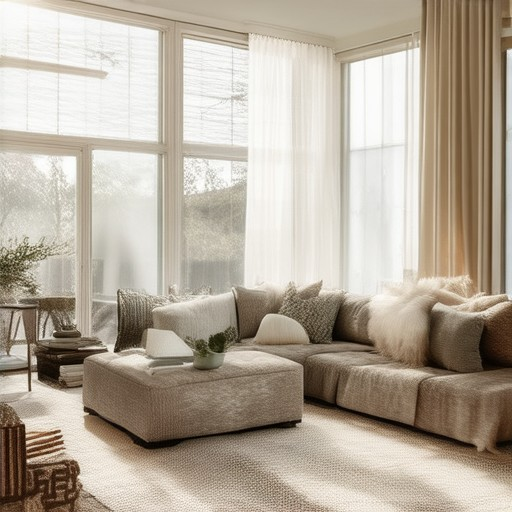
How to Make Your Living Room Look Cozy
To create a cozy living room, focus on combining soft textures, warm lighting, and inviting furniture arrangements. Here’s a step-by-step guide:
- Soft Textures : Incorporate plush blankets, fluffy pillows, and velvety curtains to add warmth and comfort. Balance these elements to avoid a cluttered appearance.
- Warm Lighting : Use table lamps, string lights, or overhead fixtures with soft white or warm LED bulbs to create a soothing glow. Avoid harsh fluorescent lights for a cozier ambiance.
- Comfortable Furniture Arrangement : Define a relaxation zone with a sectional sofa, armchair, and coffee table. Add a rug to ground the space and include a throw for extra comfort.
- Calming Color Scheme : Opt for neutral tones like beige, gray, or muted green to evoke calmness. Consider a feature wall with a warm accent color or subtle wallpaper for visual interest.
- Personal Touches : Display family photos, artwork, or meaningful decor to personalize the space. Create a cozy corner with a bookshelf, lamp, and candles for a welcoming spot.
- Open Layout with Subtle Dividers : If your living room has an open plan, use decorative screens or plants to define areas without closing off the space.
- Rugs and Storage : Add a large rug to define the room and include storage benches or ottomans for extra seating and organization.
- Technology Integration : Set up a media console or TV stand that blends seamlessly with your decor, ensuring the space remains cozy yet functional.
- Scent Enhancements : Use candles or diffusers with warm scents like vanilla or sandalwood to add a sense of comfort and relaxation.
By thoughtfully incorporating these elements, you can transform your living room into a haven of comfort and warmth.
The 2/3 Rule for Sofa Proportions
The 2/3 rule refers to the recommended proportion between the height and width of a sofa, aiming for a balanced and visually appealing design. Here’s a breakdown:
- Height vs. Width Ratio : The height of the sofa should ideally be two-thirds (2/3) of its width. This proportion creates a harmonious look, avoiding the risk of the sofa appearing too tall or wide.
- Comfort Consideration : This rule can also relate to seating height, suggesting that the distance from the floor to the seat is two-thirds of the total height. This ensures a comfortable sitting position, making it easier to get in and out of the sofa.
- Style Application : Many modern designs, such as mid-century modern sofas, incorporate this rule, offering a sleek and proportional appearance that suits various decor styles.
- Ergonomic Benefits : A sofa following the 2/3 rule may enhance ergonomics, providing a comfortable height for users of all ages and abilities.
This guideline helps in selecting a sofa that not only looks good but also functions well within different living spaces.
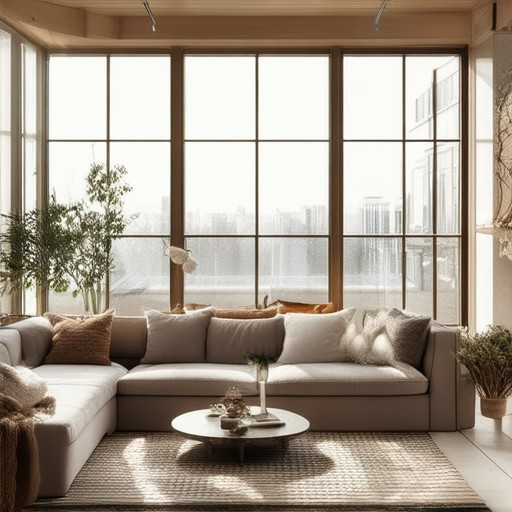
What is the Most Cozy Style of Interior Design?
Cozy interior design creates a welcoming and comfortable living environment through thoughtful use of color, texture, and furniture arrangement. While various styles can evoke a sense of warmth, certain designs are particularly known for their snug and inviting qualities.
Traditional Cozy Style
Traditional interiors often feel cozy due to their reliance on earthy tones, dark wood tones, and plush fabrics like velvet or chenille. Comfortable seating arrangements, layered textures, and dim lighting contribute to a serene atmosphere.
Farmhouse Cozy Style
Farmhouse style emphasizes simplicity and functionality, which naturally lends itself to coziness. Wide plank floors, stone or tile accents, and oversized furniture create a relaxed, inviting space that feels like a retreat.
Cottage Cozy Style
Cottage style is inherently cozy with its charming, mismatched aesthetic. Shiplap walls, floral wallpaper, and whimsical decor create a snug and comforting vibe, often complemented by soft color palettes and plenty of pillows.
Cabin Cozy Style
Cabins exude coziness with their rustic charm and use of natural materials. Log beams, stone fireplaces, and cozy seating areas surrounded by soft textiles make these spaces feel warm and inviting year-round.
Scandinavian Cozy Style
Scandinavian design, with its minimalist approach, still manages to feel cozy through the use of soft hues, clean lines, and functional yet stylish furniture. Natural light and ample storage solutions enhance the sense of comfort.
Boho Cozy Style
Bohemian or eclectic styles bring a global, textured approach to interiors, which can feel incredibly cozy. Layered rugs, vibrant textiles, and unique art create a lived-in, comfortable space that feels like home.
Rustic Cozy Style
Rustic designs often have a timeless, cozy feel with their weathered finishes, exposed beams, and natural elements. Stone, wood, and earthy tones dominate these spaces, creating a warm and inviting atmosphere.
Ultimately, the most cozy style depends on personal preferences and how well the space is tailored to create a comfortable, relaxing environment. By incorporating soft textures, warm colors, and inviting furniture, any interior can become a haven of comfort and relaxation.
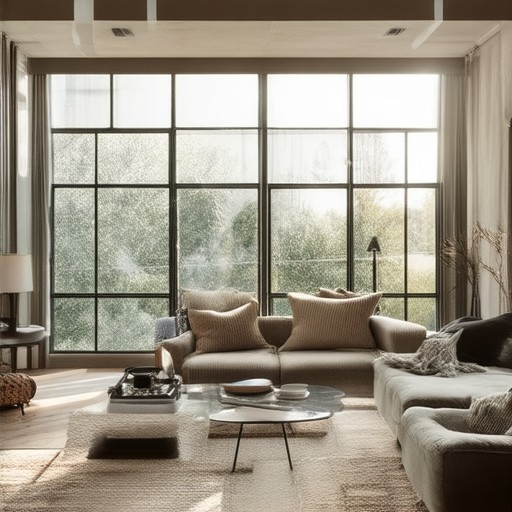
How to Make a Minimalist Living Room Cozy
To transform a minimalist living room into a cozy retreat, focus on layering textures, colors, and thoughtful design elements that enhance comfort without compromising the clean aesthetic. Here’s a step-by-step guide:
- Seating Arrangement : Opt for a compact yet comfortable seating setup. A sectional sofa paired with a small coffee table creates a welcoming space. Add throw pillows in muted tones to enhance comfort and visual interest.
- Flooring : Introduce a soft, natural fiber rug to warm up the space and add texture underfoot. Choose a size that fits the room’s dimensions for a balanced look.
- Lighting : Layer lighting to create a warm atmosphere. Install a statement lamp in a corner for task lighting, complemented by recessed ceiling lights for ambient illumination.
- Textiles : Incorporate lightweight, machine-washable blankets or throws for seasonal layers. These can be easily stored when not in use, maintaining the minimalist feel.
- Color Palette : Use a cohesive color scheme with soft neutrals like beige or light gray to create a calming environment. Introduce a subtle pop of color, such as deep navy or mustard yellow, through curtains or decorative pillows.
- Personal Touches : Add personal artwork or framed photographs to personalize the space without clutter. Display these on the wall or console table for a curated look.
- Greenery : Incorporate low-maintenance plants like succulents or snake plants to add life and freshness to the room. These plants thrive in indirect sunlight and contribute to a healthier living environment.
- Furniture Layout : Arrange furniture to maximize functionality and comfort. An L-shaped sofa offers ample seating while saving space, and a coffee table with built-in storage keeps the area tidy.
- Window Treatments : Use sheer curtains or blinds to allow natural light to filter through, enhancing the room’s brightness and warmth. Pair these with blackout curtains for better sleep comfort if needed.
By thoughtfully combining these elements, you can achieve a minimalist living room that feels inviting and cozy, balancing simplicity with comfort.
Decluttering Your Minimalist Home: A Step-by-Step Guide
To maintain a minimalist home, regular decluttering is essential. Here’s how to effectively manage clutter:
- Assess Your Space: Start by evaluating each room to identify areas that feel cluttered. Focus on high-traffic zones like entryways, kitchens, and bedrooms.
- Set Clear Goals:** Define what you aim to achieve. Are you aiming for more storage solutions, a specific aesthetic, or improved functionality?
- Categorize Items:** Sort belongings into three categories: keep , toss , and donate . Evaluate each item based on its utility and frequency of use.
- Let Go of Unnecessary Items:** Identify items that no longer serve a purpose or bring value. Consider donating or recycling old gadgets, clothes, or furniture.
- Invest in Storage Solutions:** Use organizers like drawer dividers for clothing or storage boxes with compartments for toys. Explore minimalist-friendly options that complement your decor.
- Maximize Vertical Space:** Utilize empty walls with decorative shelves to store books, plants, or other essentials without cluttering surfaces.
- Involving Family Members:** Encourage a clean-up routine by involving loved ones. Set rules like “toys go away after playtime” and offer incentives to keep everyone engaged.
- Start Small:** Tackle one area daily, beginning with less challenging spaces like the kitchen or bathroom to build momentum.
- Address Digital Clutter:** Organize files on computers and create a system for backed-up documents to reduce visual clutter in your workspace.
- Maintain Cleanliness:** Establish a weekly cleaning schedule to prevent clutter from recurring. Involve the family in regular tidy-ups.
- Enjoy Your Space:** After decluttering, take time to relax and appreciate the calmness of your minimalist environment. Discover new ways to utilize your space for added functionality.
By following these steps, you can maintain a serene and organized minimalist home that reflects your personal style and lifestyle.
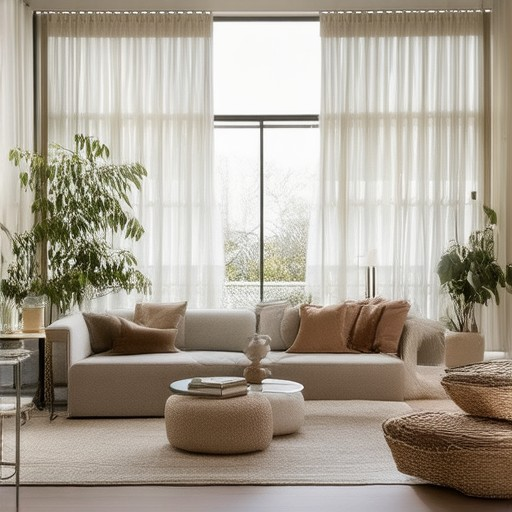
How to Make an Open Concept Living Room Cozy
Creating a cozy atmosphere in an open-concept living room requires thoughtful attention to detail and personalization. Here are some effective strategies to achieve this:
- Add Warmth Through Textiles : Incorporate soft textiles like throw pillows, blankets, and rugs to add comfort and warmth. These elements create a inviting ambiance and can help zone the space.
- Define the Space with Color : Use warm, earthy tones or deep neutrals in your color palette to create a snug feel. Darker hues can help ground the room and make it feel more intimate.
- Bring Life with Plants : Introduce greenery with low-maintenance plants to add life and freshness to the space. Plants can also help absorb noise, making the room feel more enclosed.
- Personalize with Decor : Display personal items like photographs, artwork, or meaningful trinkets to make the space feel like home. This adds character and creates a sense of belonging.
- Layer Lighting for Ambiance : Combine different lighting sources such as table lamps, overhead fixtures, and floor lamps to create a layered lighting effect. This enhances the cozy feel while providing functionality.
- Use Area Rugs Strategically : Place an area rug in your seating area to define the space and add warmth underfoot. This helps create a more intimate setting.
- Consider Acoustic Elements : Add curtains or blinds to help soften the edges of the room, making it feel more enclosed. This can also aid in regulating temperature and light.
- Focal Point for Comfort : Introduce a statement piece like a cozy corner with a rug, cushions, and a lamp to create a gathering spot that feels inviting and comfortable.
Conclusion : By thoughtfully incorporating these elements, you can transform an open-concept living room into a haven of comfort and warmth. Emphasize texture, color, and personalization to create a space that feels truly cozy and inviting.

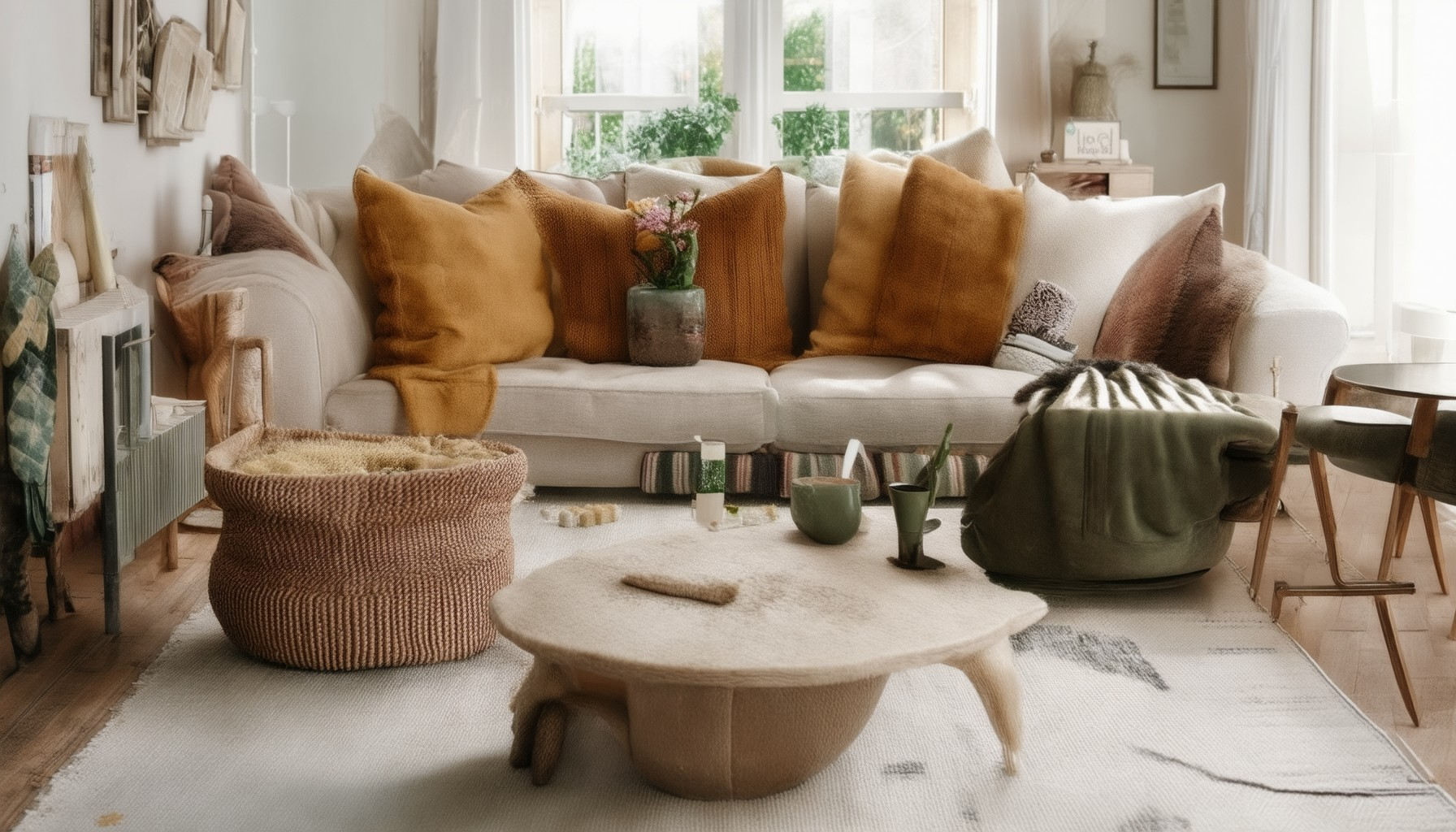



0 Comments